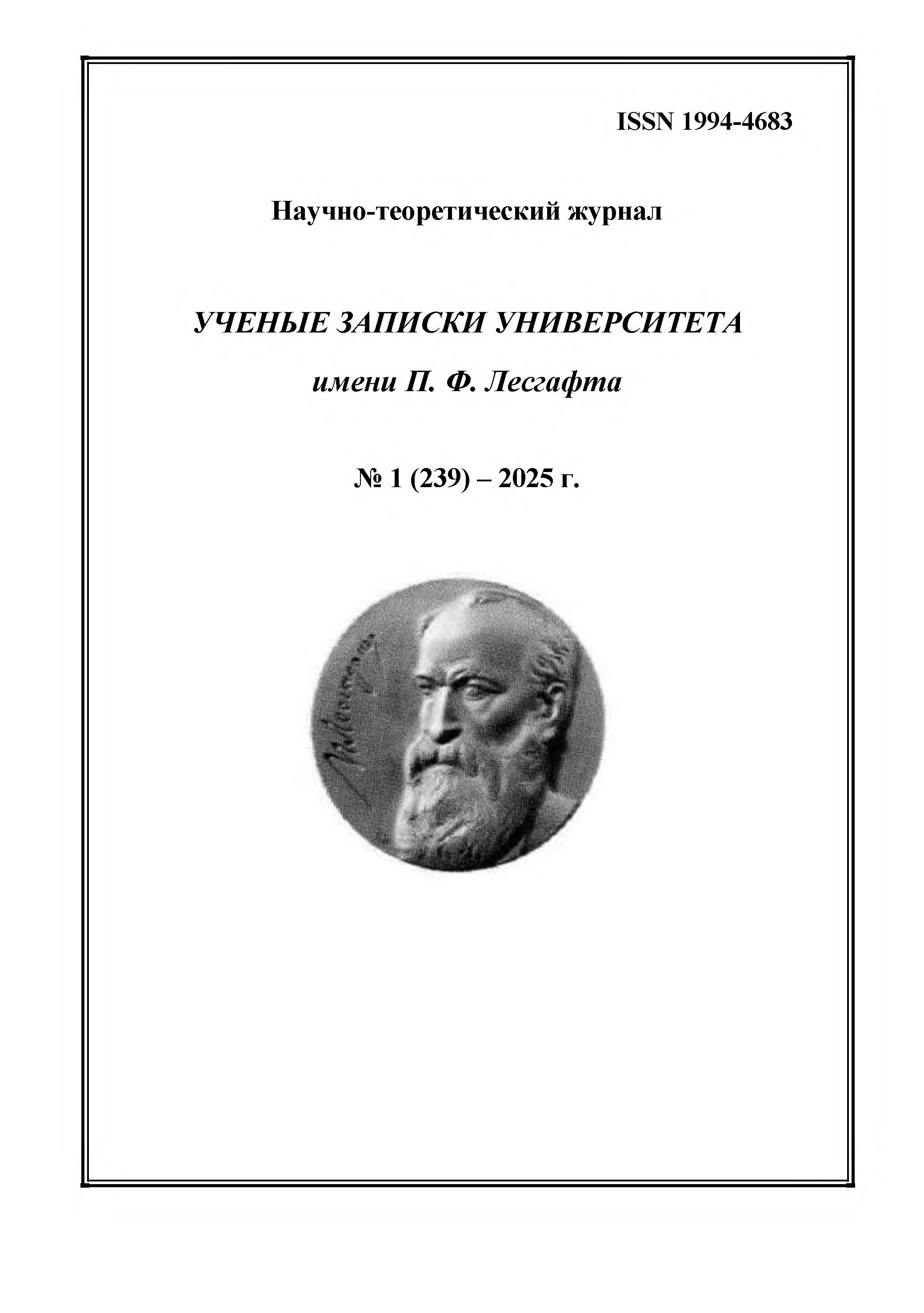from 01.01.2020 until now
Moscow, Russian Federation
from 01.01.1990 until now
Moscow, Russian Federation
from 01.01.1997 until now
Moscow, Russian Federation
from 01.01.2018 until now
Moscow, Russian Federation
UDC 796.011.3
CSCSTI 77.00
Russian Classification of Professions by Education 49.00.00
Russian Library and Bibliographic Classification 7
BISAC EDU EDUCATION
BISAC EDU033000 Physical Education
The purpose of the study is to characterize the conditions and organization of physical education for students with disabilities based on an analysis of the opinions of physical education teachers. Research methods and organization. In April 2025, an online survey of physical education teachers instructing children with disabilities was conducted to assess the conditions and organization of physical education. Research results and conclusions. Data are presented on the characteristics of teaching methods for children with disabilities, the conditions and organization of physical education lessons, the challenges of educating children with disabilities, and the main directions for improving the physical education of students with disabilities, including medical-psychological-pedagogical support, physical education and sports equipment, medical-pedagogical monitoring, interaction with parents, and staff training for teaching children with disabilities. The research results can be used to enhance the conditions and organization of physical education for children with disabilities.
children with disabilities, physical education for children, adaptive physical education, inclusive learning
1. Popova N. E., Smirnova N. A., Lemeshenko G. P. (2021), “Model' obucheniya detej s ogranichennymi vozmozhnostyami”, Sovremennyj uchenyj, No 1, pp. 166–170.
2. Lazurenko S. B., Konova S. R., Fisenko A. P. [et al.]. (2023), “Organizacziya zdorov`esberegayushhego prostranstva pri obuchenii detej s ogranichenny`mi vozmozhnostyami zdorov`ya i detej-invalidov”, Rossijsskij pediatricheskij zhurnal, vol. 26, № 1, pp. 39–45, https://doi.org/10.46563/1560-9561-2023-26-1-39-45.
3. Nurlygayanov I. N., Solovyova T. A., Lazurenko S. B. [et al.]. (2022), “Zdorov`esberezhenie v obrazovanii obuchayushhikhsya s OVZ: princzipy` i organizacziya”, Psikhologicheskaya nauka i obrazovanie, vol. 27, No 5, pp. 34–45, DOIhttps://doi.org/10.17759/pse.2022270503.
4. Sit C. H., McKenzie T. L., Cerin E. [et al.] (2017), “Physical activity and sedentary time among children with disabilities at school”, Med Sci Sports Exerc, 2017, Feb, vol. 49 (2), pp. 292–297, doi:https://doi.org/10.1249/MSS.0000000000001097.
5. Guillamon A. R., Canto E. G., Garcia H. M. (2020), “Motor coordination and academic performance in primary school students”, Journal of Human Sport and Exercise, No. 1, pp. 1–12, DOIhttps://doi.org/10.14198/JHSE.2022.171.05.
6. Conde M. A., Tercedor P. (2015), “Physical activity, physical education and physical condition may be related to academic and cognitive performance in young people. Systematic review”, Archivos de Medicina del Deporte, No 32 (2), pp. 100–109, URL: https://www.researchgate.net/publication/281959053_Physical_activity_physical_education_and_fitness_could_be_related_to_academic_and_cognitive_performance_in_young_A_systematic_review.
7. Katagiri M., Ito M., Murayama Y. [et al.]. (2021), “Fine and gross motor predict later psychosocial maladaptation and academic achievement”, Brain and Development, vol. 43 (5), pp. 605–615, DOIhttps://doi.org/10.1016/j.braindev.2021.01.003.
8. Mihal'chenkova N. A., Bol'shakova Yu. M., Kozhevnikova V. V. (2022), “Ustanovki na kachestvo i kompetentnost' pedagogov v inklyuzivnom obrazovanii”, Mir nauki. Pedagogika i psihologiya, V. 10, No 4, pp. 1–8.







